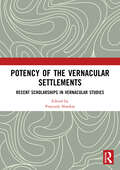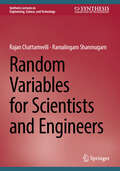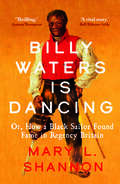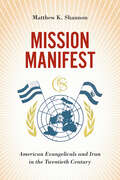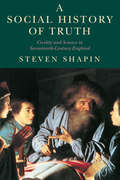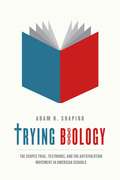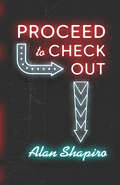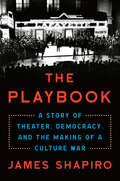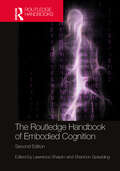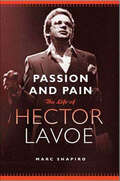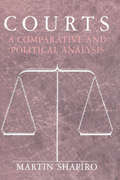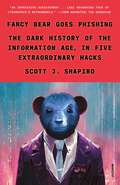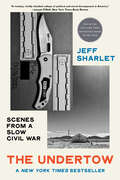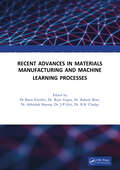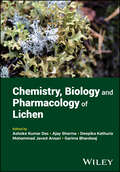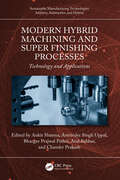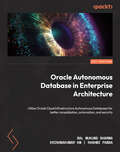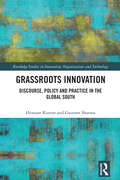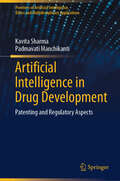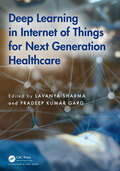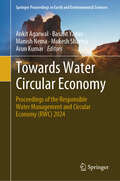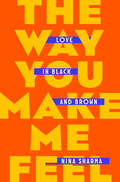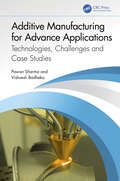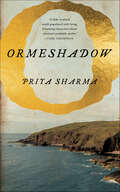- Table View
- List View
Potency of the Vernacular Settlements: Recent Scholarships in Vernacular Studies
by Pratyush ShankarThe 11th ISVS (International Seminar for Vernacular Settlements) that was hosted by the School of Environmental Design and Architecture, Navrachana University brought together some important ideas and concerns as related to questions of development at large and vernacular settlements. From questions of ecological balance, use of resources and the way of the pastoral to the ones concerning technology, design and materiality of built environment. The 11th ISVS will be remembered as one that brought whole generation of young and talented scholars in the foreground. Many of them had carried out extensive field work to support their research. The seminar was also remarkable from the point of view of extensive representation of vernacular traditions in different part of the Indian Sub-continent and Southeast Asia along with a range of theoretical concerns.
Random Variables for Scientists and Engineers (Synthesis Lectures on Engineering, Science, and Technology)
by Ramalingam Shanmugam Rajan ChattamvelliThis book provides an introductory overview of random variables and their transformations. The authors approach the topic with statistics students in mind, along with researchers in various fields who are interested in data analysis. The book begins with by defining and explaining mathematical expectation. The authors then discuss transformations of random variables, including distribution functions and special functions. The book also covers joint probability distribution and its applications. The authors have updated and expanded upon their writing on these topics, which they originally covered in their previous book, Statistics for Scientists and Engineers.
Billy Waters is Dancing: Or, How a Black Sailor Found Fame in Regency Britain
by Mary L. ShannonThe story of William Waters, Black street performer in Regency London, and how his huge celebrity took on a life of its own Every child in Regency London knew Billy Waters, the celebrated &“King of the Beggars.&” Likely born into enslavement in 1770s New York, he became a Royal Navy sailor. After losing his leg in a fall from the rigging, the talented and irrepressible Waters became London&’s most famous street performer. His extravagantly costumed image blazed across the stage and in print to an unprecedented degree. For all his contemporary renown, Waters died destitute in 1823—but his legend would live on for decades. Mary L. Shannon&’s biography draws together surviving traces of Waters&’ life to bring us closer to the historical figure underlying them. Considering Waters&’ influence on the London stage and his echoing resonances in visual art, and writing by Douglass, Dickens, and Thackeray, Shannon asks us to reconsider Black presences in nineteenth-century popular culture. This is a vital attempt to recover a life from historical obscurity—and a fascinating account of what it meant to find fame in the Regency metropolis.
Mission Manifest: American Evangelicals and Iran in the Twentieth Century (The United States in the World)
by Matthew K. ShannonIn Mission Manifest, Matthew Shannon argues that American evangelicals were central to American-Iranian relations during the decades leading up to the 1979 revolution. These Presbyterian missionaries and other Americans with ideals worked with US government officials, nongovernmental organizations, and their Iranian counterparts as cultural and political brokers—the living sinews of a binational relationship during the Second World War and early Cold War. As US global hegemony peaked between the 1940s and the 1960s, the religious authority of the Presbyterian Mission merged with the material power of the American state to infuse US foreign relations with the messianic ideals of Christian evangelicalism. In Tehran, the missions of American evangelicals became manifest in the realms of religion, development programs, international education, and cultural associations. Americans who lived in Iran also returned to the United States to inform the growth of the national security state, higher education, and evangelical culture. The literal and figurative missions of American evangelicals in late Pahlavi Iran had consequences for the binational relationship, the global evangelical movement, and individual Americans and Iranians. Mission Manifest offers a history of living, breathing people who shared personal, professional, and political aims in Iran at the height of American global power.
A Social History of Truth: Civility and Science in Seventeenth-Century England (Science and Its Conceptual Foundations series)
by Steven ShapinHow do we come to trust our knowledge of the world? What are the means by which we distinguish true from false accounts? Why do we credit one observational statement over another? In A Social History of Truth, Shapin engages these universal questions through an elegant recreation of a crucial period in the history of early modern science: the social world of gentlemen-philosophers in seventeenth-century England. Steven Shapin paints a vivid picture of the relations between gentlemanly culture and scientific practice. He argues that problems of credibility in science were practically solved through the codes and conventions of genteel conduct: trust, civility, honor, and integrity. These codes formed, and arguably still form, an important basis for securing reliable knowledge about the natural world. Shapin uses detailed historical narrative to argue about the establishment of factual knowledge both in science and in everyday practice. Accounts of the mores and manners of gentlemen-philosophers are used to illustrate Shapin's broad claim that trust is imperative for constituting every kind of knowledge. Knowledge-making is always a collective enterprise: people have to know whom to trust in order to know something about the natural world.
Trying Biology: The Scopes Trial, Textbooks, and the Antievolution Movement in American Schools
by Adam R. ShapiroIn Trying Biology, Adam R. Shapiro convincingly dispels many conventional assumptions about the 1925 Scopes “monkey” trial. Most view it as an event driven primarily by a conflict between science and religion. Countering this, Shapiro shows the importance of timing: the Scopes trial occurred at a crucial moment in the history of biology textbook publishing, education reform in Tennessee, and progressive school reform across the country. He places the trial in this broad context—alongside American Protestant antievolution sentiment—and in doing so sheds new light on the trial and the historical relationship of science and religion in America. For the first time we see how religious objections to evolution became a prevailing concern to the American textbook industry even before the Scopes trial began. Shapiro explores both the development of biology textbooks leading up to the trial and the ways in which the textbook industry created new books and presented them as “responses” to the trial. Today, the controversy continues over textbook warning labels, making Shapiro’s study—particularly as it plays out in one of America’s most famous trials—an original contribution to a timely discussion.
Proceed to Check Out (Phoenix Poets)
by Alan ShapiroAward-winning poet Alan Shapiro offers a new collection of poems reflecting on mortality and finitude. Alan Shapiro’s fourteenth collection of poetry, Proceed to Check Out, is a kind of summing up, or stock-taking, by an aging poet, of his precarious place in a world dominated by the ever-accelerating pace of technological innovation, political disruption, personal loss, and racial strife. These poems take on fundamental subjects—like the nature of time and consciousness and how or why we become who we are—but Shapiro presses them into becoming urgent and timely. Employing idiomatic range and formal variety, Shapiro’s poems move through recurring dreams, the coercions of childhood, and the mysterious connections of mind and matter, pleasure and memory. They meet an abiding need to find empathy and understanding in even the most challenging places—amid disaffection, public discord, and estrangement. His grasp of contemporary life—in all its insidious violence and beauty—is distinct, comprehensive, and profound.
The Playbook: A Story of Theater, Democracy, and the Making of a Culture War
by James ShapiroA brilliant and daring account of a culture war over the place of theater in American democracy in the 1930s, one that anticipates our current divide, by the acclaimed Shakespeare scholar James ShapiroFrom 1935 to 1939, the Federal Theatre Project staged over a thousand productions in 29 states that were seen by thirty million (or nearly one in four) Americans, two thirds of whom had never seen a play before. At its helm was an unassuming theater professor, Hallie Flanagan. It employed, at its peak, over twelve thousand struggling artists, some of whom, like Orson Welles and Arthur Miller, would soon be famous, but most of whom were just ordinary people eager to work again at their craft. It was the product of a moment when the arts, no less than industry and agriculture, were thought to be vital to the health of the republic, bringing Shakespeare to the public, alongside modern plays that confronted the pressing issues of the day—from slum housing and public health to racism and the rising threat of fascism. The Playbook takes us through some of its most remarkable productions, including a groundbreaking Black production of Macbeth in Harlem and an adaptation of Sinclair Lewis&’s anti-fascist novel It Can&’t Happen Here that opened simultaneously in 18 cities, underscoring the Federal Theatre&’s incredible range and vitality. But this once thriving Works Progress Administration relief program did not survive and has left little trace. For the Federal Theatre was the first New Deal project to be attacked and ended on the grounds that it promoted &“un-American&” activity, sowing the seeds not only for the McCarthyism of the 1950s but also for our own era of merciless polarization. It was targeted by the first House un-American Affairs Committee, and its demise was a turning point in American cultural life—for, as Shapiro brilliantly argues, &“the health of democracy and theater, twin born in ancient Greece, have always been mutually dependent.&”A defining legacy of this culture war was how the strategies used to undermine and ultimately destroy the Federal Theatre were assembled by a charismatic and cunning congressman from East Texas, the now largely forgotten Martin Dies, who in doing so pioneered the right-wing political playbook now so prevalent that it seems eternal.
The Routledge Handbook of Embodied Cognition (Routledge Handbooks in Philosophy)
by Lawrence Shapiro Shannon SpauldingEmbodied cognition is one of the foremost areas of study and research in philosophy of mind, philosophy of psychology, and cognitive science. The Routledge Handbook of Embodied Cognition is an outstanding guide and reference source to the key topics and debates in this exciting subject and essential reading for any student and scholar of philosophy of mind and cognitive science.Extensively revised and enlarged for this second edition, the Handbook comprises 42 chapters by an international team of expert contributors and is divided into ten parts: Historical Underpinnings Perspectives on Embodied Cognition Embodied Cognition and Predictive Processing Perception Language Reasoning and Education Virtual Reality Social and Moral Cognition and Emotion Action and Memory Reflections on Embodied Cognition The early chapters of the Handbook cover empirical and philosophical foundations of embodied cognition, focusing on Gibsonian and phenomenological approaches. Subsequent chapters cover additional, important themes common to work in embodied cognition, including embedded, extended, and enactive cognition as well as chapters on empirical research in perception, language, reasoning, social and moral cognition, emotion, consciousness, memory, and learning and development.For the second edition many existing chapters have been revised and seven new chapters added on: AI and robotics, predictive processing, second-language learning, animal cognition, sport psychology, sense of self, and critiques of embodied cognition, bringing the Handbook fully up to date with current research and debate.
Passion and Pain: The Life of Hector Lavoe
by Marc ShapiroA definitive biography of Hector Lavoe's rise from Puerto Rico to stardom in New York that led to sold-out concerts and best-selling salsa albums, yet gave way to drug addiction, a strained marriage and tragedy.From the poverty-stricken streets of Ponce, Puerto Rico to the vibrant barrios of New York City, HECTOR LAVOE became the singer of all singers, and the driving-force behind the Salsa movement in the mid-1960s. His popularity rivaled that of his contemporaries, Tito Puente, Celia Cruz and Johnny Pacheco.Behind the music, Hector's life was filled with drugs, alcohol and women. An endless stream of tragedy plagued him, including a gun-related accident that killed his son, Hector's ninth floor jump from a hotel window, and his death in 1993 from AIDS. But Hector's pristine voice, one-of-a-kind stage performances, sold-out concerts and bestselling albums were what his fans remember most and what made him an international icon. His music brought joy to legions of people, and it continues today.Marc Shapiro's Passion and Pain is "A no-holds barred biography" (Uptown Magazine) of a fascinating life.
Courts: A Comparative and Political Analysis
by Martin ShapiroIn this provocative work, Martin Shapiro proposes an original model for the study of courts, one that emphasizes the different modes of decision making and the multiple political roles that characterize the functioning of courts in different political systems.
Fancy Bear Goes Phishing: The Dark History of the Information Age, in Five Extraordinary Hacks
by Scott J. Shapiro“Unsettling, absolutely riveting, and—for better or worse—necessary reading.” —Brian Christian, author of Algorithms to Live By and The Alignment ProblemAn entertaining account of the philosophy and technology of hacking—and why we all need to understand it.It’s a signal paradox of our times that we live in an information society but do not know how it works. And without understanding how our information is stored, used, and protected, we are vulnerable to having it exploited. In Fancy Bear Goes Phishing, Scott J. Shapiro draws on his popular Yale University class about hacking to expose the secrets of the digital age. With lucidity and wit, he establishes that cybercrime has less to do with defective programming than with the faulty wiring of our psyches and society. And because hacking is a human-interest story, he tells the fascinating tales of perpetrators, including Robert Morris Jr., the graduate student who accidentally crashed the internet in the 1980s, and the Bulgarian “Dark Avenger,” who invented the first mutating computer-virus engine. We also meet a sixteen-year-old from South Boston who took control of Paris Hilton’s cell phone, the Russian intelligence officers who sought to take control of a US election, and others.In telling their stories, Shapiro exposes the hackers’ tool kits and gives fresh answers to vital questions: Why is the internet so vulnerable? What can we do in response? Combining the philosophical adventure of Gödel, Escher, Bach with dramatic true-crime narrative, the result is a lively and original account of the future of hacking, espionage, and war, and of how to live in an era of cybercrime.Includes black-and-white images
Jnaana Samhita Maasapatrike - May 2024: ಜ್ಞಾನ ಸಂಹಿತ ಮಾಸಪತ್ರಿಕೆ – ಮೇ 2024
by Sharada and Mitrajyothi Teamವಿಷಯಗಳ ಸಂಗ್ರಹದೊಂದಿಗೆ ನಿಯತಕಾಲಿಕೆ-ಸಾಮಾನ್ಯ ಜ್ಞಾನ, ಪ್ರಚಲಿತ ವಿದ್ಯಮಾನಗಳು, ಪಾಕವಿಧಾನಗಳು ಮತ್ತು ಹಾಸ್ಯಗಳು
The Undertow: Scenes From A Slow Civil War
by Jeff SharletAn Instant New York Times Bestseller. A National Book Critics Circle Finalist for Nonfiction One of the New York Times 100 Notable Books of 2023 One of The New Republic's Best Books of 2023 “A riveting, vividly detailed collage of political and moral derangement in America.” —Joseph O’Neill, New York Times Book Review One of America’s finest reporters and essayists explores the powerful currents beneath the roiled waters of a nation coming apart. An unmatched guide to the religious dimensions of American politics, Jeff Sharlet journeys into corners of our national psyche where others fear to tread. The Undertow is both inquiry and meditation, an attempt to understand how, over the last decade, reaction has morphed into delusion, social division into distrust, distrust into paranoia, and hatred into fantasies—sometimes realities—of violence. Across the country, men “of God” glorify materialism, a gluttony of the soul, while citing Scripture and preparing for civil war—a firestorm they long for as an absolution and exaltation. Lies, greed, and glorification of war boom through microphones at hipster megachurches that once upon a time might have preached peace and understanding. Political rallies are as aflame with need and giddy expectation as religious revivals. At a conference for incels, lonely single men come together to rage against women. On the Far Right, everything is heightened—love into adulation, fear into vengeance, anger into white-hot rage. Here, in the undertow, our forty-fifth president, a vessel of conspiratorial fears and fantasies, continues to rise to sainthood, and the insurrectionist Ashli Babbitt, killed on January 6 at the Capitol, is beatified as a martyr of white womanhood. Framing this dangerous vision, Sharlet remembers and celebrates the courage of those who sing a different song of community, and of an America long dreamt of and yet to be fully born, dedicated to justice and freedom for all. Exploring a geography of grief and uncertainty in the midst of plague and rising fascism, The Undertow is a necessary reckoning with our precarious present that brings to light a decade of American failures as well as a vision for American possibility.
Recent Advances in Material, Manufacturing, and Machine Learning: Proceedings of 2nd International Conference (RAMMML-23)
by Abhishek Sharma Rajiv Gupta R. B. Chadge Bjorn Schuller Rakesh Mote J. P. GiriThe main aim of the 2nd international conference on recent advances in materials manufacturing and machine learning processes-2023 (RAMMML-23) is to bring together all interested academic researchers, scientists, engineers, and technocrats and provide a platform for continuous improvement of manufactur□ing, machine learning, design and materials engineering research. RAMMML 2023 received an overwhelm□ing response with more than 530 full paper submissions. After due and careful scrutiny, about 120 of them have been selected for presentation. The papers submitted have been reviewed by experts from renowned institutions, and subsequently, the authors have revised the papers, duly incorporating the suggestions of the reviewers. This has led to significant improvement in the quality of the contributions, Taylor & Francis publications, CRC Press have agreed to publish the selected proceedings of the conference in their book series of Advances in Mechanical Engineering and Interdisciplinary Sciences. This enables fast dissemina□tion of the papers worldwide and increases the scope of visibility for the research contributions of the authors.
Chemistry, Biology and Pharmacology of Lichen
by Ajay Sharma Mohammad Javed Ansari Garima Bhardwaj Ashoke Kumar Das Deepika KathuriaUnderstand the properties and applications of one of the world’s most ubiquitous flora Lichen is a single entity comprising two or more organisms—most typically algae and fungus—in a symbiotic relationship. It is one of the planet’s most abundant categories of flora, with over 25,000 known species across all regions of the globe. Lichens’ status as a rich source of bioactive metabolites and phytochemicals, as well as their potential as bio-indicators, has given them an increasingly prominent role in modern research into medicine, cosmetics, food, and more. Chemistry, Biology and Pharmacology of Lichen provides a comprehensive overview of these bountiful flora and their properties. It provides not only in-depth analysis of lichen physiology and ecology, but also a thorough survey of their modern and growing applications. It provides all the tools readers need to domesticate lichen and bring their properties to bear on some of humanity’s most intractable scientific problems. Chemistry, Biology and Pharmacology of Lichen readers will also find: Applications of lichen in fields ranging from food to cosmetics to nanoscience and beyond Detailed discussion of topics including lichen as habitats for other organisms, lichens as anticancer drugs, antimicrobial properties of lichen, and many more Detailed discussion on key bioactive compounds from lichens Chemistry, Biology and Pharmacology of Lichen is ideal for scientists and researchers in ethnobotany, pharmacology, chemistry, and biology, as well as teachers and students with an interest in biologically important lichens.
Modern Hybrid Machining and Super Finishing Processes: Technology and Applications (Sustainable Manufacturing Technologies)
by Ankit Sharma Chander Prakash Atul Babbar Amrinder Singh Uppal Bhargav Prajwal PathriThis book captures the recent breakthroughs in subtractive manufacturing and difficult-to-machine, material-based, modern machining techniques. It illustrates various combinations of hybrid machining and super finishing, and outlines the critical area profile accuracy, high-precision machining, high tolerance, surface quality, chipping, and cracking for converting into new applications.Modern Hybrid Machining and Super Finishing Processes: Technology and Applications provides scientific and technological insights on subtractive manufacturing routes. It covers a wide range of micromachining parts, electronic components, metrological devices, and biomedical instruments on materials such as titanium, stainless steel, high-strength temperature-resistant alloys, fiber-reinforced composites, and ceramics, refractories, and other difficult-to-machine alloys. The book emphasizes machined surface accuracy and quality of surface, productivity, and automatization. It also covers creating complex, intricate, and complicated shapes for difficult-to-machine materials. The book goes on to offer an investigation on electrochemical discharge machining, abrasive-based nano-finishing, and rotary ultrasonic machining-based parametric combination, as well as discuss the latest trends in hybrid machining combined processes.This book is a firsthand reference for commercial organizations mimicking modern hybrid machining processes by targeting difficult-to-machine, materials-based applications. By capturing the current trends of today’s manufacturing practices, this book becomes a one-stop resource for scholars, manufacturing professionals, engineers, and academic researchers.
Oracle Autonomous Database in Enterprise Architecture: Utilize Oracle Cloud Infrastructure Autonomous Databases for better consolidation, automation, and security
by Bal Mukund Sharma Krishnakumar KM Rashmi PandaGet up to speed with Oracle's Autonomous Databases and implementation strategies for any workload or use case, including transactional, data warehousing, and non-relational databasesKey FeaturesExplore ADB, its business benefits, and architectural considerationsMigrate the existing workload to ADB, explore high availability, and use cloud native methods for monitoring and event notificationsLeverage APEX, JSON, the REST API, and SQL Developer Web features for rapid developmentBook DescriptionOracle Autonomous Database (ADB) is built on the world's fastest Oracle Database Platform, Exadata, and is delivered on Oracle Cloud Infrastructure (OCI), customer data center (ExaCC), and Oracle Dedicated Region Cloud. This book is a fast-paced, hands-on introduction to the most important aspects of OCI Autonomous Databases.You'll get to grips with concepts needed for designing disaster recovery using standby database deployment for Autonomous Databases. As you progress, you'll understand how you can take advantage of automatic backup and restore. The concluding chapters will cover topics such as the security aspects of databases to help you learn about managing Autonomous Databases, along with exploring the features of Autonomous Database security such as Data Safe and customer-managed keys for Vaults.By the end of this Oracle book, you'll be able to build and deploy an Autonomous Database in OCI, migrate databases to ADB, comfortably set up additional high-availability features such as Autonomous Data Guard, and understand end-to-end operations with ADBs.What you will learnExplore migration methods available for Autonomous Databases, using both online and offline methodsCreate standby databases, RTO and RPO objectives, and Autonomous Data Guard operationsBecome well-versed with automatic and manual backups available in ADBImplement best practices relating to network, security, and IAM policiesManage database performance and log management in ADBUnderstand how to perform data masking and manage encryption keys in OCI's Autonomous DatabasesWho this book is forThis book is for decision makers, enterprise cloud architects, solution consultants, cloud engineers, implementation partners, and technology students, as well as anyone who wants to learn about Oracle's Autonomous Databases delivered on Oracle Cloud Infrastructure (OCI). Beginner-level knowledge of Linux and OCI and networking concepts and databases, along with hands-on experience in OCI environments is required before getting started with this book.
Grassroots Innovation: Discourse, Policy and Practice in the Global South (Routledge Studies in Innovation, Organizations and Technology)
by Gautam Sharma Hemant KumarThis book explores the process of grassroots innovation in the context of the Global South. It explains why these bottom-up solutions developed by common people are generated due to a lack of available or affordable technology to meet their needs and how they are included in the mainstream imagination of the economy by studying these innovations in India. It analyses the grassroots innovation process from idea generation to its implementation.Detailing both theoretical and practical dimensions of grassroots innovation, the book provides a holistic understanding of the phenomenon by tracing its history in the pre-independence discourse on development to the present-day policies for institutionalizing these innovations in the mainstream. It will provide the readers with a bottom-up commentary on innovation and development in the context of the Global South in general and India in particular. It adopts a qualitative research design with a wide range of data collected through interviews, participant observations, and field notes. The book contains seven chapters to describe the discourse, policy perspectives, and current practice of grassroots innovations in general.The interdisciplinary, timely book provides thoughtful analysis for scholars and upper-level students in the fields of technology and innovation management, development studies, and public management.
Artificial Intelligence in Drug Development: Patenting and Regulatory Aspects (Frontiers of Artificial Intelligence, Ethics and Multidisciplinary Applications)
by Kavita Sharma Padmavati ManchikantiThis book discusses how Artificial Intelligence developments have revolutionized the area of medicine and how companies use them to develop applications. While the book covers the growth of AI in medicine and the early developments in AI based medical tools, it provides an in-depth analysis of the current developments in relation to the area of medical diagnostics. The book focuses on how enterprises and institutes have developed their intellectual property portfolio, particularly patents, in this area. Cross-country patenting analysis helps in understanding key areas of growth in certain markets and also company strategies and arrangements. The introduction of AI based products in market is subject to regulation. The developments in policy and regulation influence the development and deployment of such products into the market. This book brings focus to the development of policy and regulation and how regulatory developments impact the introduction of AI-based healthcare products from a cross-country perspective. Further, how regulatory developments lead to the evolution of standards, build reliability and safety in this area are also examined. The unique aspect of this book is the comprehensive coverage of the dual aspects of the nature and scope of AI-based innovations in health care and the related drug regulatory aspects which are imperative for the understanding for students, researchers, and those who work in this area.
Deep Learning in Internet of Things for Next Generation Healthcare
by Lavanya Sharma Pradeep Kumar GargThis book presents the latest developments in deep learning-enabled healthcare tools and technologies and offers practical ideas for using the IoT with deep learning (motion-based object data) to deal with human dynamics and challenges including critical application domains, technologies, medical imaging, drug discovery, insurance fraud detection and solutions to handle relevant challenges. This book covers real-time healthcare applications, novel solutions, current open challenges, and the future of deep learning for next-generation healthcare. It includes detailed analysis of the utilization of the IoT with deep learning and its underlying technologies in critical application areas of emergency departments such as drug discovery, medical imaging, fraud detection, Alzheimer's disease, and genomes. Presents practical approaches of using the IoT with deep learning vision and how it deals with human dynamics Offers novel solution for medical imaging including skin lesion detection, cancer detection, enhancement techniques for MRI images, automated disease prediction, fraud detection, genomes, and many more Includes the latest technological advances in the IoT and deep learning with their implementations in healthcare Combines deep learning and analysis in the unified framework to understand both IoT and deep learning applications Covers the challenging issues related to data collection by sensors, detection and tracking of moving objects and solutions to handle relevant challenges Postgraduate students and researchers in the departments of computer science, working in the areas of the IoT, deep learning, machine learning, image processing, big data, cloud computing, and remote sensing will find this book useful.
Towards Water Circular Economy: Proceedings of the Responsible Water Management and Circular Economy (RWC) 2024 (Springer Proceedings in Earth and Environmental Sciences)
by Mukesh Sharma Arun Kumar Basant Yadav Ankit Agarwal Manish NemaResponsible water management and circular economy aims to establish a common understanding of circular economy principles and resilience in the water sector and to support countries in the implementing those principles. It is essential for water security to deal with the effect of climate change. It can be achieved through smart water management, use of non-conventional water resources, rejuvenation of natural water systems, using advance tools and techniques and adaptation strategies. It will help in improving the water availability in terms of quantity as well as quality and human health. Smart water governance and educating society can also play an important role in achieveing the Sustainable Development Goal (SDG 6) “Water for all“. The book aims to accelerate interaction among various stakeholders.
The Way You Make Me Feel: Love in Black and Brown
by Nina Sharma&“Remarkable . . . The Way You Make Me Feel affirms that Black and Brown existence in America comes with no guarantee of collective solidarity, no innate promise of racial equality. The path to justice is uncertain, Sharma reminds us, and we must each work hard—and be bold enough to sacrifice our own comfort—to actualize it.&” —Washington PostA hilarious and moving memoir in essays about love and allyship, told through one Asian and Black interracial relationshipWhen Nina Sharma meets Quincy while hitching a ride to a friend&’s Fourth of July barbecue, she spots a favorite book, Maxine Hong Kingston&’s The Woman Warrior, in the back seat of his cramped car, and senses a sadness from him that&’s all too familiar to her. She is immediately intrigued—who is this man? In The Way You Make Me Feel, Sharma chronicles her and Quincy&’s love story, and in doing so, examines how their Black and Asian relationship becomes the lens through which she moves through and understands the world.In a series of sensual and sparkling essays, Sharma reckons with caste, race, colorism, and mental health, moving from her seemingly idyllic suburban childhood through her and Quincy&’s early sweeping romance in the so-called postracial Obama years and onward to their marriage. Growing up, she hears her parents talk about the racism they experienced at the hands of white America—and as an adult, she confronts the complexities of American racism and the paradox of her family&’s disappointment when she starts dating a Black man. While watching The Walking Dead, Sharma dives into the eerie parallels between the brutal death of Steven Yeun&’s character and the murder of Vincent Chin. She examines the trailblazing Mira Nair film Mississippi Masala, revolutionary in its time for depicting a love story between an Indian woman and a Black man on screen, and considers why interracial relationships are so often assumed to include white people. And as she and Quincy decide whether to start a family, they imagine a universe in which Vice President Kamala Harris could possibly be their time-traveling daughter.Written with a keen critical eye and seamlessly weaving in history, pop culture, and politics, The Way You Make Me Feel reaffirms the idea that allyship is an act of true love.
Additive Manufacturing for Advance Applications: Technologies, Challenges and Case Studies
by Pawan Sharma Vishvesh BadhekaThe book discusses the latest trends such as 4D printing, wire arc additive manufacturing (WAAM), direct energy deposition, and topological optimization in additive manufacturing (AM), and its compliance with the ASTM/ISO standards. It further explains materials for additive manufacturing and the development of novel future materials.The focus of this book is to cover the fundamentals, principles, selection of material and equipment, and applications of additive manufacturing (AM) in a comprehensive manner. It will showcase information about the effective utilization of additive manufacturing for advanced applications in diverse areas such as biomedical, aerospace, automobile, defence, and reverse engineering. The other main features are- · Covers comprehensive discussion on the theoretical aspects of additive manufacturing such as sintering, diffusion, and photopolymerization. · Showcases applications of additive manufacturing in diverse fields including aerospace engineering, automotive engineering, biomedical engineering, and reverse engineering. · Presents case studies to showcase real-time problems and solutions using additive manufacturing. · Includes pedagogical features such as algorithms, exercises, and case studies. The text is primarily written for senior undergraduate, graduate students, and academic researchers in the fields of manufacturing engineering, industrial engineering, production engineering, mechanical engineering, and aerospace engineering.
Ormeshadow
by Priya SharmaWinner of the 2019 Shirley Jackson Novella AwardWinner of the 2020 BFS AwardAcclaimed author Priya Sharma transports readers back in time with Ormeshadow, a coming-of-age story as dark and rich as good soil.Burning with resentment and intrigue, this fantastical family drama invites readers to dig up the secrets of the Belman family, and wonder whether myths and legends are real enough to answer for a history of sin.Uprooted from Bath by his father's failures, Gideon Belman finds himself stranded on Ormeshadow farm, an ancient place of chalk and ash and shadow. The land crests the Orme, a buried, sleeping dragon that dreams resentment, jealousy, estrangement, death. Or so the folklore says. Growing up in a house that hates him, Gideon finds his only comforts in the land. Gideon will live or die by the Orme, as all his family has.At the Publisher's request, this title is being sold without Digital Rights Management Software (DRM) applied.
